#juichimen kannon
Text

3 treasures
#art#collage#buddha#juichimen kannon#golf#retrofuture#design#black and white#monochrome#haha#aura#enchantment
32 notes
·
View notes
Text
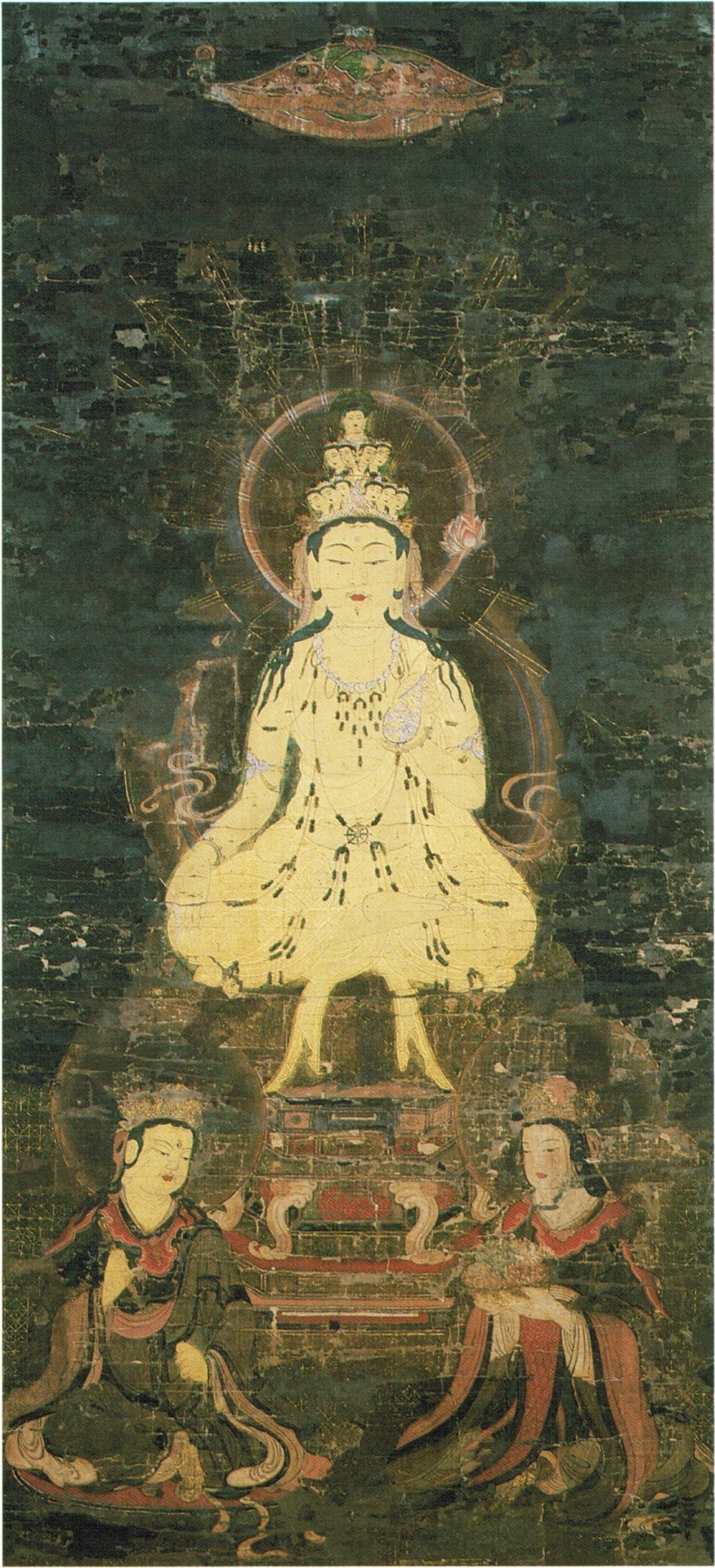
A painted image of Eleven-Faced Kannon Bodhisattva (十一面観音菩薩) dating to the later Kamakura period (1185-1333) at Tōji Temple (東寺) in Kyoto
Image from "東寺の菩薩像" [Images of Bodhisattvas at Tōji] published by 東寺宝物館 [Tōji Treasure Museum], 1993, page 44
#japanese art#buddhist art#京都#kyoto#東寺#toji#十一面観音菩薩#十一面観音#juichimen kannon#観音菩薩#観音#kannon#avalokitesvara#真言宗#shingon#crazyfoxarchives#arte japonés#arte budista
38 notes
·
View notes
Text
Symbols in Hashirama's jutsus and their implications, part 1
I really like the symbolism and themes in Hashirama’s jutsus, so I decided to do this deep dive into it. The religious / folklore symbols can give us a few ideas on Hashirama’s fighting style, personality, and perhaps intentions too. Although I generally don’t believe that Kishimoto did all of this consciously, there’s a few implications we can gather from it. I added plenty of links for concepts that might be unknown to the reader but that aren’t in the scope of this topic. You can either google them or just proceed on the links I provided. I also recommend reading it in google doc which is more practical, because I added descriptions of pics and it can be read better but it’s up to you - google doc.
1. Sage Art Wood Release: True Several Thousand Hand


This monstrous jutsu is, most likely, influenced by Eleven-faced and thousand-armed Kannon.
Originated in India, Kannon is a bodhisattva (which is someone who strives to achieve enlightenment and Buddhahood) who already achieved enlightenment, but decided to postpone Buddhahood to save all sentient beings from the cycle of suffering, therefore it is not Buddha. To put it another way, Kannon is known for indiscriminate compassion, and she is called a lord of mercy. That being said, another name for Kannon in Japan is Kanzeon, meaning the one who constantly surveys (kan 観) the wold (ze 世) listening to the sounds of suffering (on 音). Kannon is commonly depicted as a woman in Japan, sometimes with androgenous features, however she used to be depicted as a man in India.
Kannon has many forms and/or emanations (which is basically a duplication of enlightened mind), each having specifics and each watching over one of the six realms. The forms differ in accordance to specific text. In the manga, we can see two of the six main forms of Kannon mixed – Senju Kannon and 11-headed Kannon.
Senju Kannon, 1000-armed Kannon, is supposed to have 1000 arms including two “main” hands (although usually depicted with ~37 or ~42 for practical purposes). Senju Kannon watches over the hungry ghost realm. This form of Kannon is likewise prayed to avoid illness, eye problems and blindness. This can implicate Madara’s blindness, whether it’s literal (as sharingan making him go blind) or figurative.
What’s more, Hashirama’s statue has a few faces above the main face – a typical sign of Juichimen Kannon, who watches over the Asura realm. Although she’s called 11-headed Kannon, she doesn’t have 11 heads in every depiction and art. The main, big face, is supposed to show tranquility and compassion. The smaller heads above the main one usually show other emotions, like anger, compassion and cheerfulness. Statues and paintings show one more face placed on top of the head. It is popularly believed that the 10 faces are supposed to symbolize 10 stages of a path to attain enlightenment and the 11th is supposed to symbolize Buddha. However, Hashirama’s statue doesn’t have such a face. Instead, there’s a wooden golem sitting at the top.


That being said, Hashirama’s statue has one main face and one row of 8 faces around the head. 10th would be the golem’s face and 11th would be Hashirama’s own face. That way, Hashirama’s Kannon indeed has 11 heads.
According to folk tales, there’s another explanation for 11 heads. It says that a long time ago, Kannon promised to free all sentient beings from the cycle of suffering (samsara). After multiple failed attempts, her distress caused her head to be split into pieces. So she begged Buddha to help her, therefore Buddha gave her eleven heads to see the suffering. Kannon could finally see the suffering and she worked more to save everyone. But she still couldn’t save everyone, so the pain of her failures causes her arms to break apart. She begged Buddha to help her again and he granted her 1000 arms. Having 1000 arms, she could finally relieve the suffering. It’s not clear where this folktale came from.
In conclusion, the hands of Hashirama’s statue are supposed to alleviate the suffering of all people. I believe it can be read either as being ironic he’s using it to inflict pain through combat, but also as extremely explanatory, because Hashirama really wanted to alleviate Konoha’s suffering Madara was casting upon it (see Madara killed 3 vanguard units, killing innocent people). On the other hand, one of the tools typical Senju Kannon holds, is a sword, so there must have been some violence included in protecting the suffering sentient beings.
As typical for Kannon, Hashirama’s statue has a third eye that symbolizes a state of enlightenment. It also has a robe typical of the Japanese version of Kannon. Moreso, she has two main hands in front in praying position, which is also common for Kannon. Unlike Senju Kannon, Hashirama’s statue doesn’t hold any tools in her hands and the hands don’t have eyes, which is also a popular theme for Senju Kannon in art.
At first, we see Hashirama’s statue sitting strait in the Japanese way, which is how Kannon is shown in works that depict Amida and Attendants (one of the two main attendants being Kannon). The reason for this position is for them to stand up fast and help the dying people reach nirvana.

We can speculate that Hashirama’s statue stands up right after to help Madara reach some kind of enlightenment, to show him the way Madara doesn’t see.
Without a doubt, this jutsu is supposed to show us Hashirama’s compassion, calmness and his great urge to protect everyone, including, at first, Madara. In the end, he has to use it against Madara to win the combat, but he really saves the village.
Senju Kannon (1000 armed Kannon):

Juichimen Kannon (11-headed Kannon):

2. Wood Release: Wood Dragon Technique
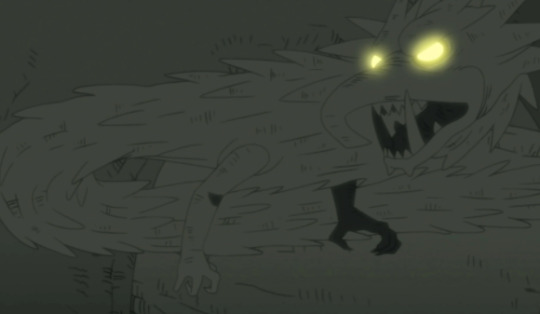
Dragons (Ryū, Ryu, Ryuu 龍; I will talk here specifically about Chinese dragons that are usually considered a different creatures than Western dragons) are serpentine creatures whose task is to protect Buddhism. They’re considered extremely powerful, however unlike in western culture, they are usually good and bring wealth and good fortune.
Dragons originated in China and they’re connected to the element of wood, or water. They’re also associated with Spring and blue/green colors.
It is usually said that dragons have the head of a camel, horns of a deer, scales of a carp, paws of a tiger, eyes of a hare and claws of an eagle. They also have a whisker under the chin. They have a bump on the forehead that helps the dragon float up to the heavens.
Typically, dragons in Japan have three claws on each leg, however, Hashirama’s dragon has four. Classical Chinese imperial dragon has, in comparison, five, but according to Chinese mythology, dragons with less claws were used for lower rank officials or for the general public. Dragons in Korea and Indonesia also typically have four claws.
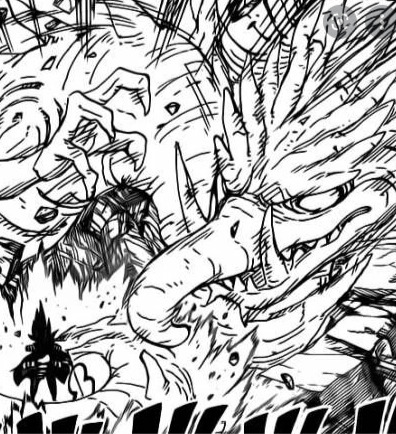
Dragons are swift and they usually control rain, rainstorms and typhoons. They can also shapeshift into a human and mate with humans.
Besides Hashirama using a mokuton version of dragon, in Naruto we can also see a water dragon, fire dragon, Mei’s water dragon, crystal dragon used by Guren and Orochimaru’s snake dragon.
3. Wood Release: Wood Human Technique


I can’t really decide what the main influence of this jutsu was, because I found two quite possible options. Because both are extremely vague and not much is known about them, I decided to do a write-up on both. This is actually all I could find and although I believe there must be more in ancient texts, internet doesn’t seem to provide more info.
Although neither of these options is a Buddha, Golem’s face is placed in the same place a Buddha’s face would be on Kannon.
Option A: Magoraka 摩睺羅伽

Magorakas are defined as serpentine musicians, or as serpents who walk on their breasts. Their folklore originates in India. They belonged to the Brahmanic pantheon and were associated with dragons they usually have around their torso or, in some depictions, they wear a crown of serpents. Sometimes, they are pictured as a monstrous snake, they are also considered “humans but not humans.” They are one of the Eight Deva Guardians of Buddhism, which is eight legions of sentient and supernatural beings that were present when Buddha expounded the Flower Sutra on Vultures Peak.
Some of their depictions have a third eye, just like Hashirama’s golem. Unfortunately, there aren't enough depictions. They, just like Hashirama’s golem, often wear serpent/snake/dragon around their torso. I was also wondering if the hair/crown on Hashirama’s golem head is supposed to be snakes or serpents. They also have a similar nose and eyebrows.
Option B: Ryūtōki 龍燈鬼 of Yaksha/Yasha
Ryuutoki is one of the Yaksha. Just like Magaroka, Yaksha is one of the groups of Eight Deva Guardians. Known to be brave fighters, they also used to be, in Hinduism manifestations, spirits of trees, forests and villages. It is said that later they converted to Buddhism. They can be both demonic or they can serve Gods as guardians. They do not have a definitive representation. Sometimes they can fly (or jump really well), just like Hashirama’s golem and they can also have fangs, which is also represented on Hashirama’s wooden golem. They share other similarities too – Yaksha are sometimes depicted with a third eye and large eyebrows. They can have horns and I wonder whether the “crown” on Hashirama’s golem is supposed to be horns after all.

It was suggested that Hashirama’s golem could be inspired by Ryūtōki, who is a Yaksha and he, just like Hashirama’s golem, wears a dragon/serpent around his torso.. His name means Dragon-Lamp Demon and he is associated with another Yaksha, Tentōki. According to a folk tale, they were once evil and demonic. After meeting Four Heavenly Kings, they were saved and decided to serve the Four Heavenly Kings. Since then, they carry lanterns for them.
Since Golem basically serves Hashirama and Ryuutoki was tamed by Four Heavenly Kings, I believe it’s supposed to symbolize Hashirama’s urge or ability to turn other people “good” and/or to defeat them, just like Four Heavenly Kings were doing.
-
Thank you for reading the first part of the symbols in Hashirama’s jutsu! I might write more one day. Currently there’s part 1 only.
Sources:
http://mesosyn.com/myth2-17.html
https://kankiten.com/magoraka/
https://www.slmoss.com/slm7600
https://hokkejimonzeki.or.jp/en/elevenfaced/
https://www.christies.com/en/lot/lot-5731729
https://www.japanese-wiki-corpus.org/Buddhism/Senju%20Kannon%20(Thousand-Armed%20Goddess%20of%20Mercy).html
https://www.onmarkproductions.com/
#hashirama#senju hashirama#mokuton jutsu#jutsu analysis#deep dive naruto#naruto meta#hashirama meta#wooden golem#1000 armed kannon#1000 armed buddha#long post#1900 words#naruto essay#hashirama symbols#hashirama buddhism#wooden dragon
25 notes
·
View notes
Photo

Eleven-Headed Deity of Compassion (Juichimen Kannon), 13th century, Cleveland Museum of Art: Japanese Art
The Eleven-Headed Kannon, a deity of mercy and compassion in the Buddhist pantheon, was introduced into Japan in the 600s. By the 700s it had gained in popularity among an increasing number of believers, a condition it enjoyed until the end of the Kamakura period. The modest size and high quality of the materials apparent in this work indicate its use as a private devotional image.
An earlier restoration of this painting included the use of an entire silk backing layer rather than silk patches with a paper backing. The tension that resulted between these two layers of silk, one old and the other recent, caused serious cracking to occur in the painting's surface. Moreover, the silk backing had been dyed a dark tone which did not enhance the appearance of the painting, although it did help hide damaged areas in the surface silk. Now two layers of backing paper support the painting, with its carefully fitted silk patches. These are toned slightly differently from the original surface values so that viewers can distinguish between the original and the modern restored areas. The original metal fittings have also been cleaned and reused. Other replacement fittings were deemed inappropriate for this early religious image and so new, specially designed ones are now in place.
Size: Overall: 106.7 x 39.7 cm (42 x 15 5/8 in.)
Medium: hanging scroll; color and cut gold (kirikane) on silk
https://clevelandart.org/art/1970.79
25 notes
·
View notes
Text
– Bodaisho – 菩提所 –
Nagoya (名古屋) – September 18, 2018
If you ever get the chance to spend time in Nagoya, I recommend going to the Osu Kannon shopping area. Of course, Osu Kannon is probably the biggest tourist site in the area, but if you enter the shopping arcade you’ll discover a treasure trove of shops, good food, and a small, modern temple known as Bansho-ji.
Now it’s very modern and flashy looking and really fits in nicely with the surrounding arcades and electronics stores, but it’s actually very old. It was built by the Oda family in 1540 and the funeral for the father of Oda Nobunaga, Oda Nobuhide, was held here. It now houses the mortuary tablets for the Oda family.
After the Oda family fell, the Tokugawa family had the temple moved to the Osu area. Much later in 1945, it was burned down in the Great Nagoya Air Raids of WWII. It was finally rebuilt in 1994.
This goshuin is for the Bodaisho (菩提所 in the upper center). Below it is Oda Nobuhige and Haru-hime’s name. Haru-hime married into the Tokugawa family and was famed for her virtue. Both the Oda and Tokugawa crests are featured on this goshuin.
You can receive 6 goshuin here:
Migawari Fudo-myo
Juichimen Kannon
Ofuke Kannon
Bodaisho
Omokaru Jizo
Hakusetsu Inari
In addition to the six goshuin you can receive here, they have special goshuin you can receive randomly through the month.
You can also see a mechanical doll (karakuri ningyo) of Oda Nobunaga that performs five times a day.
Links:
Bansho-ji website (Japanese)
Bansho-ji goshuin info (Japanese)
Front of Bansho-ji
White dragon sculpture
Location:
Bansho-ji: Bodaisho - Bodaisho - 菩提所 -Nagoya (名古屋) - September 18, 2018 If you ever get the chance to spend time in Nagoya, I recommend going to the Osu Kannon shopping area.
1 note
·
View note
Photo
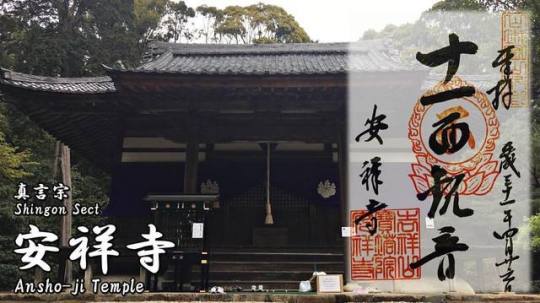
安祥寺の御朱印。ご本尊の「十一面観音(じゅういちめんかんのん)」の墨文字に、十一面観音の梵字「キャ」/「吉祥山宝性院安祥寺」の朱印です。 Ansho-ji's red ink stamp (goshuin), 'Juichimen Kannon(十一面観音).' #御朱印 #御朱印集め #御朱印巡り #安祥寺 #寺 #お寺 #kyoto #goshuin #anshoji (京都市山科区) https://www.instagram.com/jp_manual/p/Bw2_1ZZhbWf/?utm_source=ig_tumblr_share&igshid=1fw04xm39qia9
0 notes
Photo

飯山観音 - Iiyama Kannon is an 800 year old Koyasan Shingon sect Buddhist temple located in Atsugi, Kanagawa Prefecture, Japan. Popular in the Kamakura period, this temple was a centre for all embracing studies linking the Shingon sect with the Tendai, Ritsu and Zen sects. The main hall of the temple was reconstructed in the early Edo period (1600-1868). It enshrines a bronze Juichimen Kannon Bosatsu statue that dates back to the Kamakura period (1185-1333). Young people looking for a life partner come to the temple to pray to Juichimen Kannon Bosatsu that the Buddhist god will help them to find a partner. #Japan #religion #magic #superstition #Buddhism #Kannon #IiyamaKannon #gods #shingon #飯山観音 #Koyasan #Tendai #日本 #ritsuzen (at 飯山観音長谷寺)
#iiyamakannon#飯山観音#japan#shingon#koyasan#日本#ritsuzen#magic#superstition#tendai#buddhism#gods#religion#kannon
8 notes
·
View notes
Photo

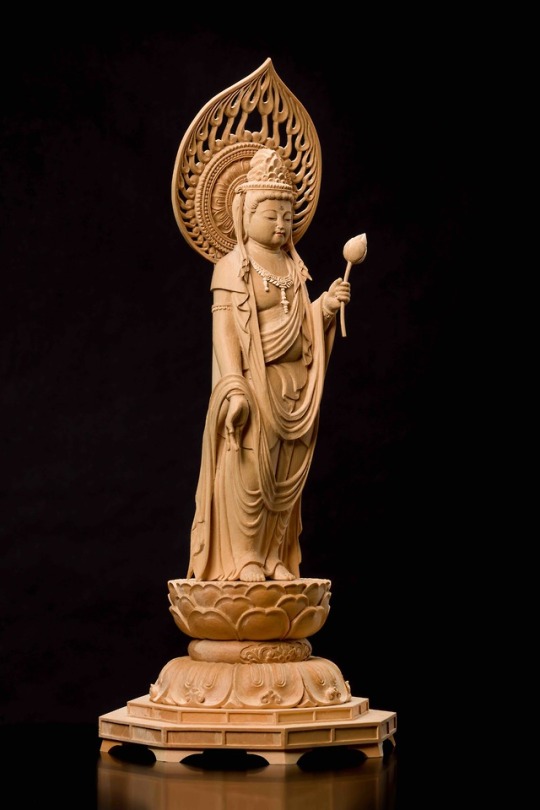
聖観音(ショウカンノン)
Sho-Kannon ;Sacred Kannon, or Aryavalokitesvara)
There are Henge Kannon (The transformations inwhich Kannon (Deity of Mercy) appears in order to save sentient beings) which has many faces and many arms such as Juichimen Kannon (Eleven-faced Kannon), Senju Kannon (Thousand Armed Kannon) and Nyoirin Kannon (the Bodhisattva of Compassion), and Kannon which has one face and two arms and do not have a superhuman figure; the latter is called 'Sho Kannon (聖観音 or 正観音).'
2018.1
0 notes
Photo

Juichimen Kannon,Yakuri-ji (Takamatsu). This bodhisattva is recognizable because it is holding a vase with a lotus flower and has many faces (usually 11, hence ju-ichi men) attached at the top of the head.
0 notes
Text
Note to self - Visit of kamakura
Kamakura
Itinéraire conseillé
Gare de Kita-Kamakura > (3 mn de march) > Temple Engakuji> (15 mn de marche) > Temple Kenchoji> (15 mn de marche) > Sanctuaire de Tsurugaoka Hachimangu > (2 mn de marche) > Musée des Trésors Nationaux de Kamakura> (8 mn de marche) > Gare de Kamakura > Déjeuner et shopping > (5 mn par la ligne Enoden) > Gare de Hase > (12 mn de marche) > Grand Bouddha > (10 mn de marche) > Temple Hasedara > (5 mn de marche) > Gare de Hase > 16 mn par la ligne Enoden > Gare d'Enoshima > (15 mn de marche) > Ile d'Enoshima, gare de Katase-Enoshima > (7 mn par la ligne Odakyu noshima) > Gare de Fujisawa
S'y déplacer
Kamakura Enoshima Free Kippu
billet de 2 jours pour une circulation libre sur les trains des lignes JR, Enoden Railways et Shonan Monorail de la zone Kamakura / Enoshima, ainsi que l'aller-retour depuis n'importe quelle gare de la ligne JR Yamanote (à Tokyo) ou la gare JR de Yokohama.
Enoshima Kamakura Free Pass
Billet à la journée pour une circulation libre sur les trains des lignes Enoden et Okakyu Railways de la zone Kamakura / Enoshima, ainsi que l'aller-retour depuis n'importe quelle gare de la ligne Odakyu entre Shinjuku et Fujisawa.
Pour plus d'informations
Excursions
JTB Sunrise Tours
Adresse : JTB Global Business France - 29 Rue du Louvre 75002 Paris
Tél : 01 53 45 93 30
Site officiel
Transports
Gare de Tokyo > (55 mn par la ligne JR Yokosuka) > Gare de Kita-Kamakura ou de Kamakura
(45 mn à partir de la gare de Shinagawa / 27 mn à partir de la gare de Yokohama)
Gare de Shinjuku > (1 h par la ligne JR Shonan-Shinjuku) > Gare de Kita-Kamakura ou de Kamakura
Kamakura est située à une heure de Tokyo en train. C'est une petite ville côtière, émaillée de temples à l'atmosphère feutrée. De la présence du gouvernement féodal qui y prit ses quartiers en 1192, elle garde aujourd'hui un héritage historique de toute première importance. Le meilleur moyen de découvrir Kamakura est encore de partir à sa découverte par soi-même. Les 5 grands temples célèbres font ici doucement glisser le promeneur vers le 12e siècle, en pleine période de Kamakura.
Le Temple Engakiji, fut construit en 1282 pour commémorer la mort des soldats japonais et mongols morts pendant la tentative d'invasion mongole du Japon. Le Temple Kenchoji construit en 1253 est d'inspiration chinoise. Le sanctuaire de Tsurugaoka Hachimangu est situé près de la gare de Kamakura. Le « Hongu » ou édifice principal du sanctuaire s'ouvre sur une vue magnifique de la ville de Kamakura. Le Musée des Trésors Nationaux de Kamakura propose plus de 2 000 trésors provenant des temples de Kamakura et change ses expositions tous les mois. Mais c'est le Grand Bouddha de bronze, bien sûr, qui attire à Kamakura le plus grand nombre de visiteurs. Le Temple Hasedara, célèbre par son édifice principal en bois et son magnifique jardin de style japonais, règne par sa splendeur sur toute la ville. L'île d'Enoshima, petite île de 4 km de périmètre, flotte délicatement dans la baie de Sagami.
A voir
Temple Engakuji
Fondé au 13e siècle, c'est le second parmi les grands temples zen de Kamakura. Il abrite une célèbre statue en bois du Bouddha, et sa cloche du temple est classée Trésor national. L'accès au temple est très spectaculaire avec sa volée de marches encadrée par de grands cèdres.
Proche de la sortie sud-est de la gare de Kita-Kamakura.
Temple Kenchoji
Numéro un des cinq grands temples zen de Kamakura, il est aussi le premier à avoir été constuit dans cette ville.
20 mn à pied de la gare de Kita-Kamakura ; arrêt de bus Kenchoji à partir des gares de Kamakura ou de Kita-Kamakura.
Site Web
Sanctuaire de Tsurugaoka Hachimangu
Avec plus de 9 millions de visiteurs par an, le Sanctuaire de Tsurugaoka Hachimangu est le symbole de la vieille capitale. Le sanctuaire a été fondé par Minamoto Yoritoshi, ancêtre du shogun Minamoto Yorimoto l'instaurateur du gouvernement féodal de Kamakura qui régna sur le Japon de 1192 à 1333. Les environs du sanctuaire regorgent de lieux d'intérêts: le trésor, les jardins avec des étangs et les restes d'un arbre ginko gigantesque dont on disait qu'il était vieux de 1000ans, avant qu'il ne soit frappé par la foudre le 10mars 2010. Il faut gravir 61 marches de pierre pour accéder au bâtiment principal du sanctuaire.
15 mn à pied de la sortie est de la gare de Kamakura.
Musée des Trésors nationaux de Kamakura
Le musée rassemble des œuvres d'art importantes liées à la riche histoire de Kamakura, dont cinq Trésors nationaux. Le bâtiment principal, construit après le grand tremblement de terre de 1923, prend modèle sur le temple Shoso-in de Nara.
12 mn à pied de la gare de Kamakura ; 3 mn à pied des arrêts de bus Hachimangu ou Daigaku-mae.
Grand Bouddha
Le Grand Bouddha ou « Daibutsu » est une statue géante de 11,4 mètres de haut et de 122 tonnes qui médite en position du lotus, sous la voûte céleste. Il est fait de plaques de bronze assemblées sur une structure creuse et il est possible de pénétrer dans le monument. Il fut achevé en 1252 grâce à Minamoto Yorimoto pour rivaliser avec le Bouddha de Nara qui était alors plus imposant.
10 mn à pied de la gare de Hase sur la ligne Enoden ; arrêt de bus Daibutsu-mae (bus Keikyu Enoden).
Temple Hasedera
L'élement central du temple Hasedera est Juichimen Kannon, une statue en bois du boddisathva Kannon aux 11 visages. Avec ses 9,18 mètres, c'est la plus grande statue en bois du Japon.
5 mn à pied de la gare de Hase sur la ligne Enoden ; 3 mn à pied de l'arrêt de bus Hasekannon-mae (bus Keikyu Enoden).
0 notes
Text
[su_label type=”info”]” A Tour of Japanese Waterfalls”(諸国瀧廻り)[/su_label]
Just after the success of “Thirty-Six Views of Mount Fuji”, popular ukiyo-e artist between Edo people Katsushika Hokusai produced “A Tour of Japanese Waterfalls” from 1833 to 1837. When he drew the pitcures, he used the name of “former Hokusai and Iitsu” for the signature. Because he give Hokusai to his disciple and took new name Iitsu(為一).
In the prints series, he showed the eight famous falls in Japan. They depict not only the place of scenic beauty, but also the lives of people who was familiar to the waterside.
[su_label type=”black”]Garalley of “A Tour of Japanese Waterfalls”[/su_label]
1.Ono Falls on the Kiso Kaido Road
2.Amida Falls in the Depth of Kiso Road’
3.Yoro Falls in Mino Province
4.Roben Falls at Oyama in Sagami Province
5.Kirifuri Falls at Mt. Kurokami in Shimotsuke Province
6.Yoshitsune Horse-wash Falls at Yoshino, Yamato Province
7.Aoigaoka Falls in the Eastern Capital
8.Kiyotaki Kannon at Sakanoshita on the Tokai Road
Some of the Shinto ascetics did the water discipline under the Ono Falls(小野の滝). Utagawa Hiroshige also drew the waterfalls as Agematsu in the series of “Sixty-Nine Stations of the Nakasendō(木曽街道六十九次).
The hight of the Amida Falls(阿弥陀の滝) is 80m. The name originated from that one monk prayed in the near cave, and Amida-nyorai appeared. We can see the stream through the round shape.
Yoro Falls(養老の滝) have a legend that a dutiful son scooped the water from the falls for his father. When he came back to the home, the water had changed into the alcoholic drink. It really made happy the father.
Many Edo people visit Ooyama Mountain in Kanagawa prefecture to pray. Before they climb the mountain, they did the water discipline under the Roben Falls at the foot for purifying.
One of the big three waterfalls in Nikko. The tourists enjoyed the falls before they visit Toshogu Shrine.
The falls have the story that Minamoto Yoshitsune(源義経), the brother of the founder of Kamakura shogunate, washed his horse by the water. The traveler in Edo Period also would have done as the same.
Aoigaoka Falls(葵ヶ岡の滝) at Akasaka, Edo don’t exist now. It would be not much of a falls, but Edo people might have love it.
It was said that the Buddha statue of Amida-nyorai, Juichimen-kannon, and Zizo-bosatsu was placed near the falls. So a lot of visitor saw Kiyotaki(清滝) in Edo Period.
Back to the page of Katsushika Hokusai
Hokusai’s pictures of ” A Tour of Japanese Waterfalls” " A Tour of Japanese Waterfalls"(諸国瀧廻り) Just after the success of "Thirty-Six Views of Mount Fuji"
#Buddhism#Iitsu#Japanese Waterfalls#Katsushika Hokusai#landscape painting#ukiyoe#woodblock printings
0 notes
Text
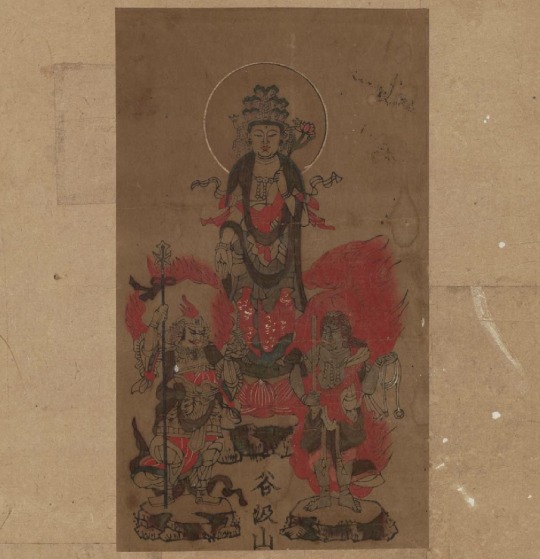
A 19th-century print of Eleven-Faced Kannon Bodhisattva (十一面観音菩薩) flanked by the guardian deity Bishamonten (毘沙門天) and the wrathful wisdom king Fudō Myōō (不動明王) at Kegonji Temple (華厳寺) in Ibigawa, Gifu Prefecture, thirty-third temple in the Thirty-three Temple Western Pilgrimage Circuit
Woodblock print, ink on paper, with hand-applied color from the collection of the Museum of Fine Arts, Boston
#buddhist art#japanese print#御札#talisman#十一面観音菩薩#十一面観音#juichimen kannon#観音菩薩#観音#kannon#avalokitesvara#毘沙門天#bishamoten#不動明王#fudo myoo#岐阜県#gifu prefecture#揖斐川町#ibigawa#華厳寺#kegonji#西国三十三所#天台宗#tendai
25 notes
·
View notes
Photo
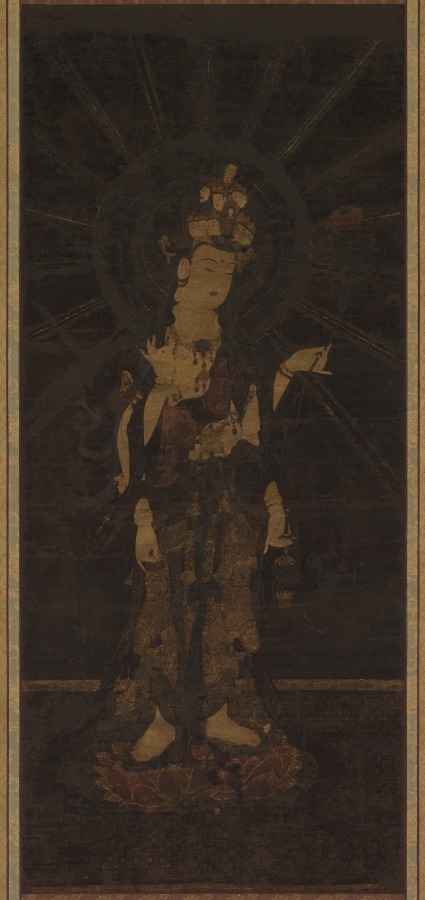
Eleven-Headed Deity of Compassion (Juichimen Kannon), 13th century, Cleveland Museum of Art: Japanese Art
The Eleven-Headed Kannon, a deity of mercy and compassion in the Buddhist pantheon, was introduced into Japan in the 600s. By the 700s it had gained in popularity among an increasing number of believers, a condition it enjoyed until the end of the Kamakura period. The modest size and high quality of the materials apparent in this work indicate its use as a private devotional image.
An earlier restoration of this painting included the use of an entire silk backing layer rather than silk patches with a paper backing. The tension that resulted between these two layers of silk, one old and the other recent, caused serious cracking to occur in the painting's surface. Moreover, the silk backing had been dyed a dark tone which did not enhance the appearance of the painting, although it did help hide damaged areas in the surface silk. Now two layers of backing paper support the painting, with its carefully fitted silk patches. These are toned slightly differently from the original surface values so that viewers can distinguish between the original and the modern restored areas. The original metal fittings have also been cleaned and reused. Other replacement fittings were deemed inappropriate for this early religious image and so new, specially designed ones are now in place.
Size: Overall: 106.7 x 39.7 cm (42 x 15 5/8 in.)
Medium: hanging scroll; color and cut gold (kirikane) on silk
https://clevelandart.org/art/1970.79
17 notes
·
View notes
Text
– Bodaisho Oda Nobuhide Special – 菩提所-
Nagoya(名古屋) – September 18, 2018
If you ever get the chance to spend time in Nagoya, I recommend going to the Osu Kannon shopping area. Of course, Osu Kannon is probably the biggest tourist site in the area, but if you enter the shopping arcade you’ll discover a treasure trove of shops, good food, and a small, modern temple known as Bansho-ji.
Now it’s very modern and flashy looking and really fits in nicely with the surrounding arcades and electronics stores, but it’s actually very old. It was built by the Oda family in 1540 and the funeral for the father of Oda Nobunaga, Oda Nobuhide, was held here. It now houses the mortuary tablets for the Oda family.
After the Oda family fell, the Tokugawa family had the temple moved to the Osu area. Much later in 1945, it was burned down in the Great Nagoya Air Raids of WWII. It was finally rebuilt in 1994.
This is one of the special illustrated goshuin that are offered on special days each month. This one is for the Bodaisho (菩提所 in orange ink in the center). On the right side you can see an illustration of Oda Nobuhide. The Oda crest is above him. On the left is Haru-hime of the Tokugawa family. She was famous for her virtue. The Tokugawa crest can be seen below her. Both of their names are written in gold ink.
You can receive 6 goshuin here:
Migawari Fudo-myo
Juichimen Kannon
Ofuke Kannon
Bodaisho (regular)
Omokaru Jizo
Hakusetsu Inari
In addition to the six goshuin you can receive here, they have special goshuin you can receive randomly through the month.
You can also see a mechanical doll (karakuri ningyo) of Oda Nobunaga that performs five times a day.
Links:
Bansho-ji website (Japanese)
Bansho-ji goshuin info (Japanese)
White dragon sculpture
Front of Bansho-ji
Location:
Bansho-ji: Bodaisho Oda Nobuhide and Haru-hime Special - Bodaisho Oda Nobuhide Special - 菩提所- Nagoya(名古屋) - September 18, 2018 If you ever get the chance to spend time in Nagoya, I recommend going to the Osu Kannon shopping area.
0 notes
Text

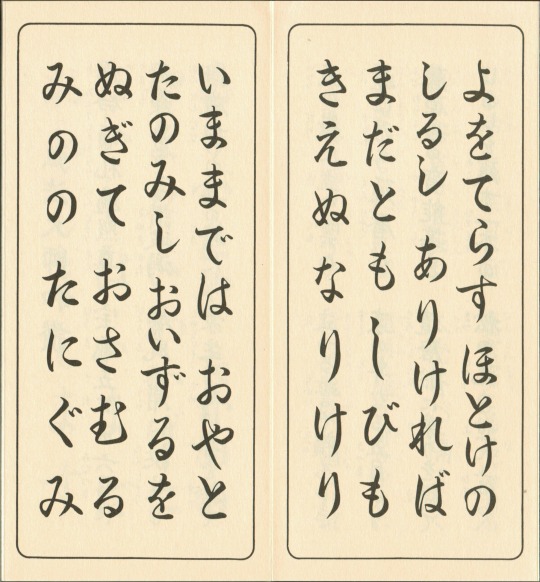
The pilgrims’ hymns for Kegonji Temple (華厳寺) in Ibigawa, Gifu Prefecture, from a hymnal for the thirty-three temples of the western pilgrimage circuit dedicated to Kannon Bodhisattva (観音菩薩)
My own rough, tentative translation follows:
Number Thirty-Three: Mount Tanigumi Kegonji Temple (Tendai School) in Ibi District, Mino Province
Tokuzumi, Tanigumi Village, Ibi County, Gifu Prefecture
Hymns in reverent gratitude for grace and thankfulness for blessings to Eleven-Faced Kannon:
Vows of countless years
Have been pledged and sworn right here
At Tanigumi,
The temple where pure waters
Trickle and flow from the moss
As long as this sign
Of the buddha who lights up
The world remains here,
Its guiding lamp shall never
Waver nor be extinguished
All along the way
Relying on these pilgrims' cloaks
Like parental care,
We now offer them up here
At Mino Tanigumi
Images from “Saigoku Sanjūsansho Goeika” (西国三十三所 御詠歌) edited by Tomita Haruyuki (冨田晴行), published by Ryūshōdō (隆昌堂) in Osaka, 1995 reprint of the 1973 edition, unpaginated accordion book
#buddhist temple#岐阜県#gifu prefecture#揖斐川町#ibigawa#華厳寺#kegonji#西国三十三所#十一面観音菩薩#十一面観音#juichimen kannon#観音菩薩#観音#kannon#avalokitesvara#japanese literature#buddhist literature#御詠歌#goeika#japanese music#sacred music#天台宗#tendai#crazyfoxarchives
15 notes
·
View notes
Photo
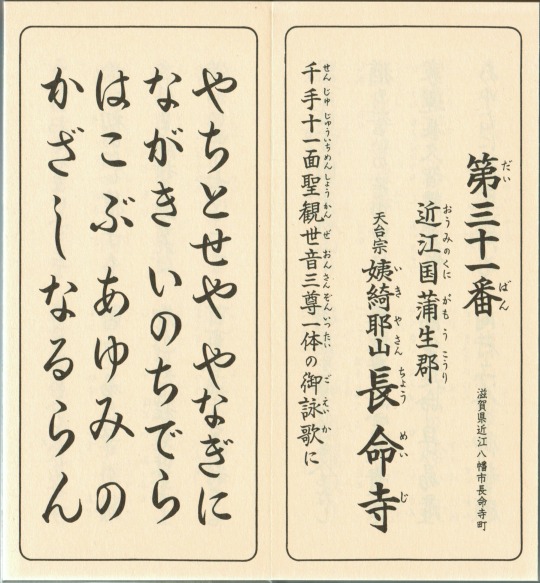
The pilgrims’ hymn for Chōmeiji Temple (長命寺) in Ōmihachiman, Shiga Prefecture, from a hymnal for the thirty-three temples of the western pilgrimage circuit dedicated to Kannon Bodhisattva (観音菩薩)
My own rough, tentative translation follows:
Number Thirty-One: Ikiyasan Chōmeiji Temple (Tendai School) in Gamou District, Ōmi Province
Chōmeiji Neighborhood, Ōmihachiman City, Shiga Prefecture
A hymn for Thousand-Armed Kannon, Eleven-Faced Kannon, and Holy Kannon, three enshrined deities as one:
Let’s carry along
Branches of willow alive
For eight thousand years
As we make our pilgrimage
To this temple of long life
Image from “Saigoku Sanjūsansho Goeika” (西国三十三所 御詠歌) edited by Tomita Haruyuki (冨田晴行), published by Ryūshōdō (隆昌堂) in Osaka, 1995 reprint of the 1973 edition, unpaginated accordion book
#buddhist temple#滋賀県#shiga prefecture#近江八幡市#omihachiman#長命寺#chomeiji#西国三十三所#千手観音菩薩#千手観音#senju kannon#十一面観音菩薩#十一面観音#juichimen kannon#聖観音菩薩#聖観音#sho kannon#観音菩薩#観音#kannon#avalokitesvara#japanese literature#buddhist literature#御詠歌#goeika#japanese music#sacred music#天台宗#tendai#crazyfoxarchives
22 notes
·
View notes